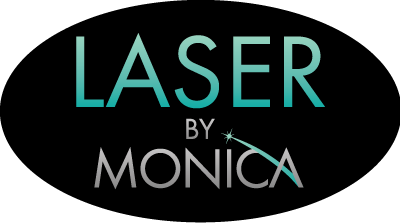
Melasma is common and often appears over the summer or gets worse during certain times of your life. You may notice patches above your lips, black spots, or blotchy areas that seem to stick around. Changes to your skin can be upsetting or frustrating, but investing in melasma treatment can help you feel confident.
What Is Melasma?
Melasma, also known as hyperpigmentation, is a skin condition that causes brown or gray-brown patches. These patches are darker than your normal skin tone and may look like freckles or blotchy areas. Patches may look tan, blue-gray, brown, or brown-gray on darker skin tones.
Melasma usually affects your face, especially your forehead, cheeks, chin, and upper lip area. A large patch over the lip is sometimes called a melasma mustache. However, it can also develop on your arms, neck, and other areas.
Melasma Causes
The exact causes of melasma are unclear. Experts believe it develops because pigment cells (melanocytes) in your skin become more active in response to sun damage, hormones, or medications. These cells release more melanin, or pigment, possibly as a side effect or to protect the skin.
Sun Damage
UV rays from sunlight are the most well-known cause of melasma. UV exposure causes skin cells to produce more melanin-stimulating hormone, leading to higher pigmentation levels.
However, there may be other factors. Studies now show that UV light triggers immune cells called mast cells to release histamine in your skin. Histamine is a chemical that causes inflammation.
In response, pigment cells release more melanin, causing pigmented lesions or hyperpigmentation on your face. Mast cells also increase the size and thickness of blood vessels in affected areas, leading to melasma dark patches on your face or body.
Hormones
Women are more likely to get melasma because of the effects of hormones on the skin. High estrogen and progesterone levels during pregnancy or from hormonal medication can lead to more activity in your pigment cells.
As these hormones bind to cells, more pigment is released, and melasma patches develop. Experts have ideas on how to get rid of melasma after pregnancy or hormonal treatment, but it often comes back.
Medications
Certain medications can also cause melasma or hyperpigmentation. These include anti-seizure medications and medications that make your skin more sensitive to sunlight, such as retinoids, certain blood pressure medications, and some antibiotics.
How to Get Rid of Melasma on Face Naturally
The best sun-related melasma treatment is prevention. Wearing sunscreen can stop hyperpigmentation from developing and is essential after treatment. Skincare products, peels, and lasers can help brighten the skin once melasma develops.
Skincare Products
Certain skincare ingredients interfere with the enzymes that promote or increase pigment production. These ingredients also soothe inflammation or interfere with the blood vessel pathways in melasma development.
These products include:
- Azelaic acid
- Glycolic acid
- Tranexamic acid
- Retinoids
- Hydroquinone
However, finding the best dark spot remover for your face with at-home products is difficult. Products often brighten your skin but don’t entirely remove melasma. You may need prescription creams or a combination of treatments to see a difference.
Peels
Professional chemical peels exfoliate the skin and help remove damaged outer layers and dark spots. A dermatologist can offer a medical-grade peel, which usually involves glycolic or salicylic acid.
However, an esthetician may use gentler acids such as malic or ascorbic acid. A gentle peel exfoliates the top layers of the skin, revealing fresh, bright, and glowing new skin within a few days.
Laser Treatment
Laser and LED treatment is another option for melasma. Like skincare products, it targets discoloration and interferes with pigment production pathways. Laser treatment also helps speed up the brightening process and may work well with other treatments.
How it Works: Laser Treatment for Melasma
Laser By Monica uses AdvaLight laser treatment to improve skin tone and texture. The laser uses yellow and infrared light in a pattern scanner called ADVATx. The laser passes through the skin, targeting damaged cells, fading discoloration, and reducing fine lines.
AdvaLight also targets the vascular layer or blood vessels of the skin. Melasma develops from blood vessel changes, making laser an effective treatment. It helps your skin heal and improves color, texture, and tone. You may need several treatments for the best results.
Most importantly, there’s no downtime and virtually no side effects. The AdvaLight laser uses many nano pulses, which reduces skin discomfort.
Renew Your Skin With Laser By Monica
Laser By Monica is a boutique esthetician studio with years of experience in melasma treatment. Our studio knows how to eliminate melasma and is committed to providing personalized treatment that delivers results for your unique skin. Book a consultation today.
